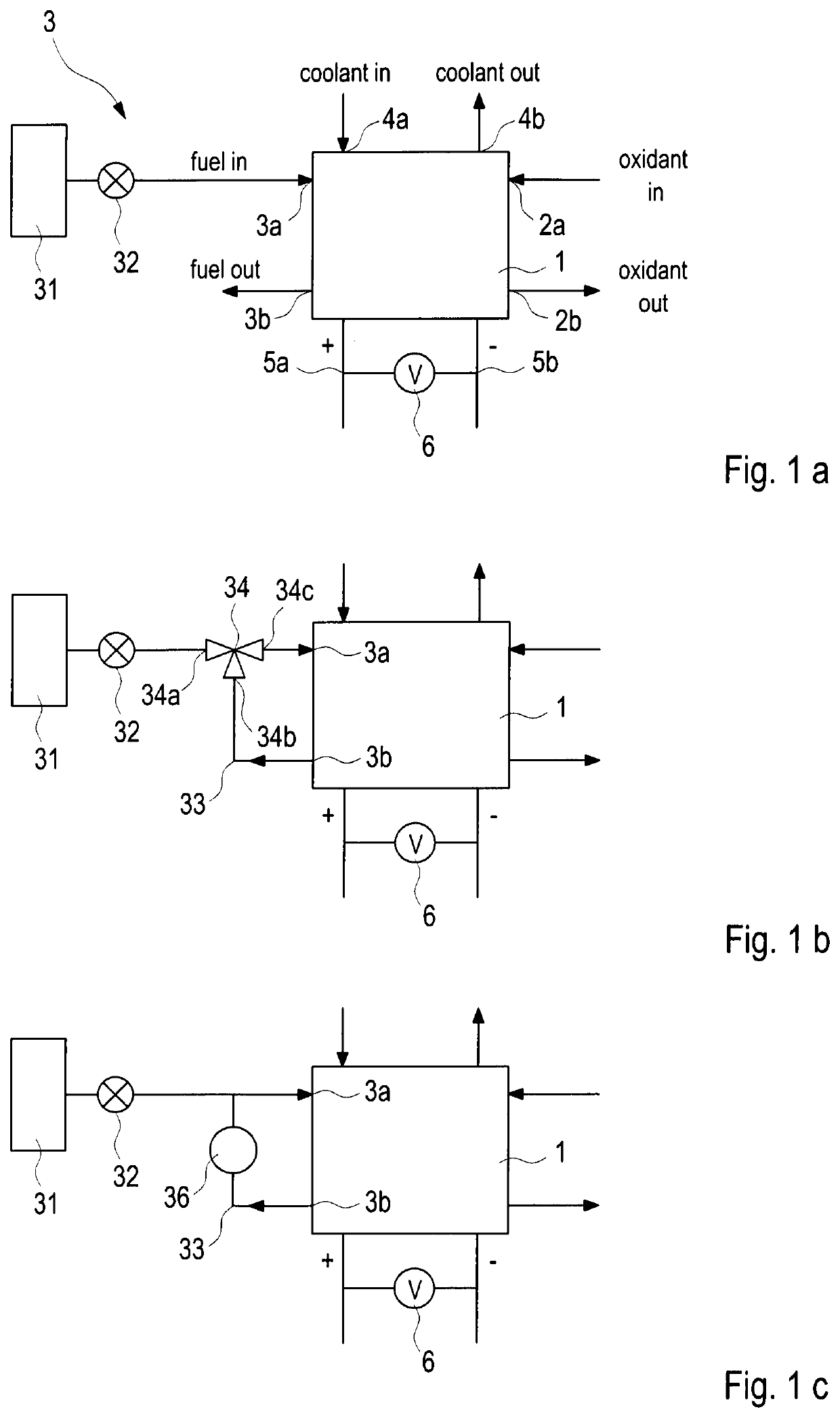Method for detecting and lessening fuel starvation in fuel cell systems
a fuel cell and operating system technology, applied in the field of fuel cell system operation, can solve the problems of weak cells, cell cannot deliver the same amount of current as its peers, and the possibility of voltage reversals in one or more cells, and achieve the effect of increasing the performance of the fuel cell stack
- Summary
- Abstract
- Description
- Claims
- Application Information
AI Technical Summary
Benefits of technology
Problems solved by technology
Method used
Image
Examples
examples
[0047]In the following tests, a fuel cell system comprising a solid polymer electrolyte fuel cell stack and suitable for use in automotive applications was employed. The system employed a recirculation line for recirculating anode exhaust back to the anode inlet. A jet pump was employed in the recirculation line as generally shown in the schematic of FIG. 1b.
[0048]The reactants supplied to the stack were hydrogen and air and the stack was operated under conditions typical of automotive applications. In particular, fresh fuel was supplied to the stack via an on-off type of regulating apparatus. This resulted in cycling of the jet pump output pressure and hence cycling of the anode inlet pressure.
[0049]FIG. 2 illustrates the sensitivity of stack voltage to the pressure of the fuel supplied to the anode inlet of the stack. In FIG. 2, the stack voltage and pressure at the anode inlet were logged at a 1 Hz frequency while the stack was operated with the jet pump cycling. The [H2] at the...
PUM
| Property | Measurement | Unit |
|---|---|---|
| output voltage | aaaaa | aaaaa |
| voltage | aaaaa | aaaaa |
| frequency | aaaaa | aaaaa |
Abstract
Description
Claims
Application Information
 Login to View More
Login to View More - R&D
- Intellectual Property
- Life Sciences
- Materials
- Tech Scout
- Unparalleled Data Quality
- Higher Quality Content
- 60% Fewer Hallucinations
Browse by: Latest US Patents, China's latest patents, Technical Efficacy Thesaurus, Application Domain, Technology Topic, Popular Technical Reports.
© 2025 PatSnap. All rights reserved.Legal|Privacy policy|Modern Slavery Act Transparency Statement|Sitemap|About US| Contact US: help@patsnap.com



